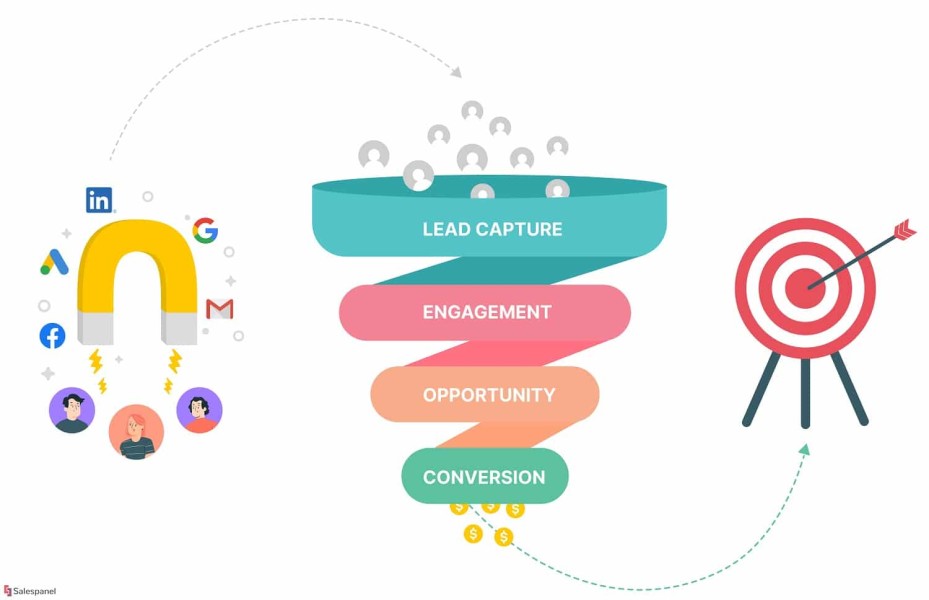Top Marketing Tips for B2B Leads and Sales Generation


Larissa Nagel
March 4th 2023
WHAT IS B2B MARKETING?
B2B is business-to-business marketing. This is a content and marketing strategy used by a business with the purpose of marketing to another business. B2B companies include service providers or SaaS for example Amazon, Hubinit, Alibaba, etc. The main aim of B2B is to enhance a business, automate processes and convert leads to clients through blog posts, newsletters, whitepapers, etc. https://youtu.be/Qj360L8WF1Q.
WHAT IS A SALE LEAD?
Sales leads are potential clients/customers, they could be individuals or organizations. Lead generation is a marketing method that is typically used to raise awareness. Sale leads initiate the sales process and play a crucial role in preserving a steady sales funnel. A sales lead is created by prospecting through the Internet and other social channels while focusing on businesses or individuals to express interest in your products or services.
HOW TO GET SUCCESSFUL SALES LEADS?
1. Send Personalized Emails
This ensures each email you send to a lead appears entirely personalized, you may use merge tags to replace the initial name or business name in each one. A recipient is more likely to respond to a targeted, tailored email.
2. Make warm calls
Calling a potential customer whom you have never spoken to before is known as cold calling. When you call someone who has heard about you in the past, this is known as warm calling. If done correctly, warm calling can be very effective.
3. Use marketing automation to get more leads
Once you’ve gathered email addresses, you can utilize marketing automation software to segment your audience and send them tailored communications to increase conversions. The sales team can also turn leads in the marketing funnel into Sales Qualified Leads (SQLs).
4. Add a live chat on your website
Various studies show that 42% of customers choose live chat when seeking customer service. Live chat conversations can easily be turned to customers, leads from live chat platforms like Intercom or Drift can be nurtured to produce more B2B sales leads, and also live chats can be used to collect email addresses for email marketing.
5. Have an Email signature with a link
When you are sending out emails, make sure to have an email signature with an incorporated link to a promotion for pertinent information on your website. This increases the number of free sales leads that visit your landing page.
6. Participate in relevant Q&A websites
New sales leads can be found in plenty on websites like Quora. Find the relevant questions to ask or respond to and give your responses to attract potential consumers. These clients ought to be working to resolve the precise issue that your solution addresses. Start by investigating current, commercially pertinent questions.
7. Post relevant blogs and newsletters
The content on blogs and newsletters should be compelling enough to draw people in. By posting on other websites, you can produce sales leads and backlinks if you have a high-quality blog. You may keep in touch with your existing clients by creating a newsletter.
8. Find unsatisfied customers of your competitors
Find competitors who are selling a comparable product. Are they more expensive or is their product less effective than yours? Look for social media users, especially from Twitter who are unhappy about your competitors and get in touch with them.
B2B MARKETING PRACTICES
Product Marketing
A B2B service or product is promoted at scale through product marketing, which raises awareness of it. The positioning, message, and value proposition of a good or service are the responsibility of the product marketer. Customer case studies, webinars, and sales material are all B2B marketing strategies that are crucial in getting corporate audiences to make purchases. You must first conduct a needs analysis of your target market to produce the best outcomes in product marketing. Once you’ve identified these, make sure each piece of content includes a message that speaks to consumers and provides a solution.
Content Marketing
The most crucial phase of a digital marketing campaign is undoubtedly creating B2B content.
Content, whether online or offline, helps to draw in, convert, and keep customers. It often consists of written, audio, and video content that has been disseminated throughout an organization’s social media networks after being published on its blog to increase organic traffic. Which is an essential component of a B2B content marketing plan.
Content Batching
Content batching is creating all of your content, captions, or visual content at once within a set period of time, this saves time, maintains a steady feed, and encourages consistency. While the goal of batching is to increase productivity while decreasing procrastination, you must put forth a lot of initial work in order to achieve the desired result.
With content batching, you concentrate your creative energy without hopping from task to task and prepare material weeks in advance, giving your social media strategy a more cogent and stress-free approach. Buffer is an ideal software tool to help with content scheduling.
B2B Digital Marketing
The digital component of your approach includes the use of email, social media, sponsored channels like Google advertisements, text messages, and influencer marketing. B2B marketers are aware that it is no longer sufficient to “just” post content on social media. Instead, brands are expected to establish a social media presence and position themselves as authoritative in their industry.
Campaign Marketing
Before you can carry out a campaign to sell your good or service, you must do a lot of planning. Often, email marketing is used to carry it out. Results are analyzed to determine the effectiveness of each campaign.
Performance Marketing
Performance marketing, as it relates to digital marketing, mixes paid advertising, such as Google ads, with brand promotion across platforms.
Performance marketing enables you to control the amount of money your business spends on digital advertising, produce targeted leads from commercials, and increase brand loyalty.
The most popular channels are Facebook, LinkedIn, and Google.
